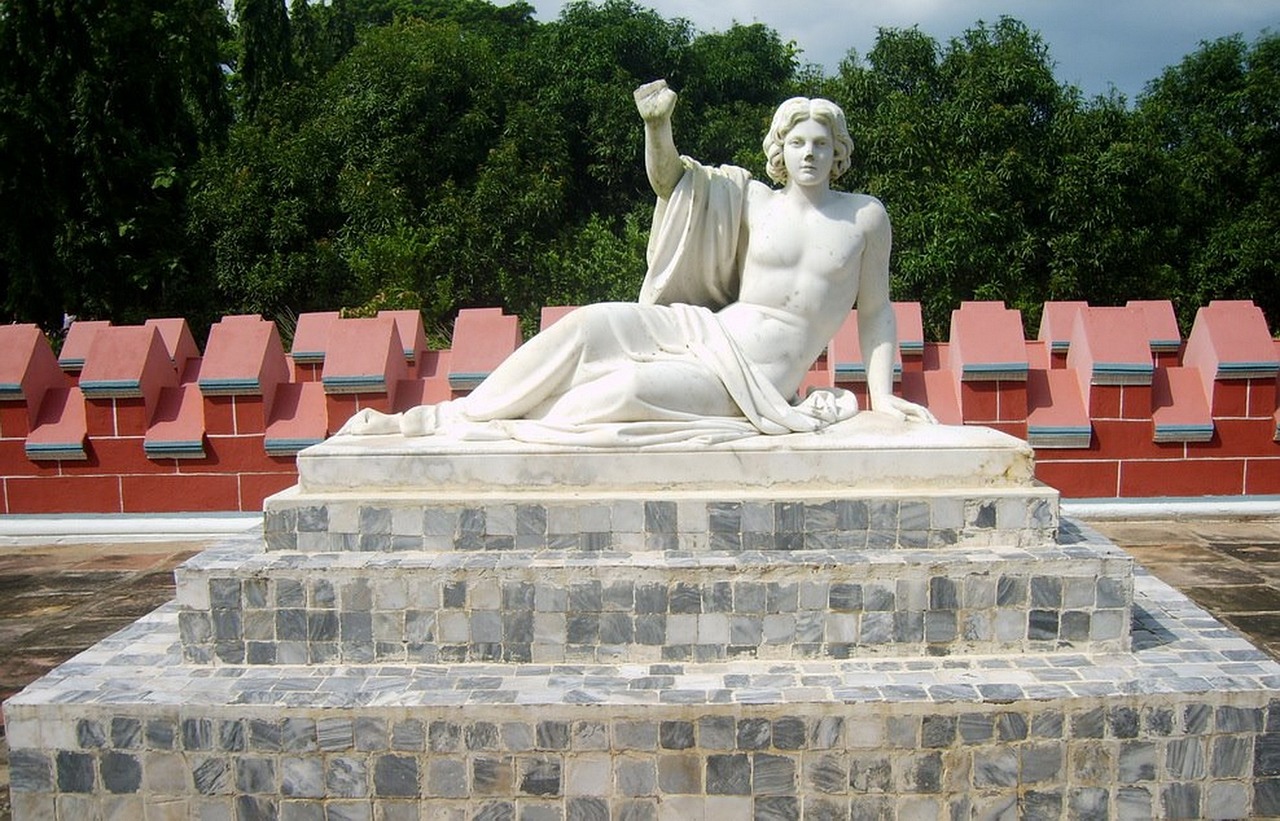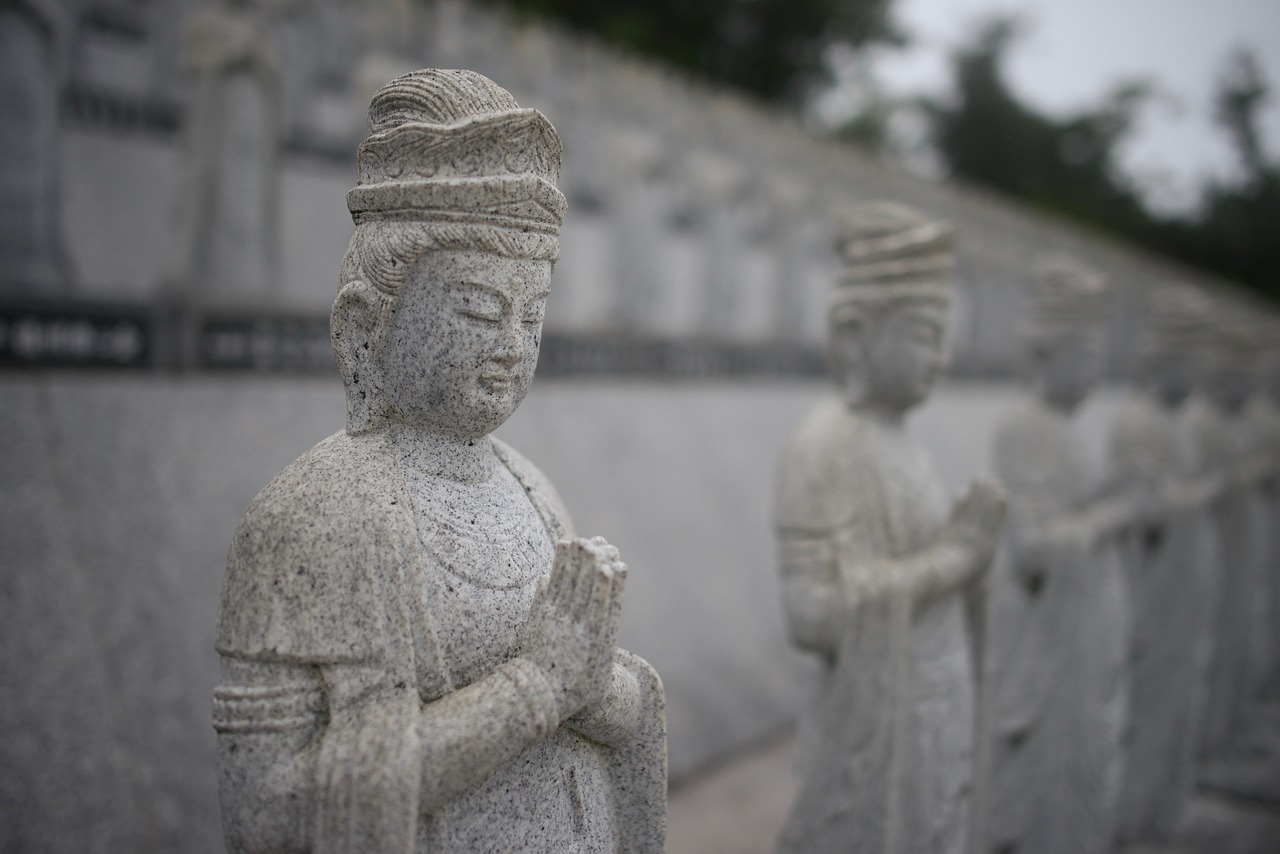This article delves into the multifaceted impact of Mamata Banerjee on West Bengal, examining her political journey, unique governance style, and significant socio-economic contributions that have profoundly shaped the state’s landscape.
The Rise of Mamata Banerjee
Mamata Banerjee’s political journey is a testament to her determination and resilience. Overcoming numerous obstacles, she emerged as a formidable leader in West Bengal’s political arena, advocating for the rights of the common people and challenging the status quo.
Key Policies and Initiatives
- Social Welfare Programs: Her administration has launched various initiatives aimed at uplifting marginalized communities, ensuring access to essential services such as education and healthcare.
- Infrastructure Development: Focused on enhancing transportation and urban development, Mamata’s government has prioritized infrastructure projects to stimulate economic growth.
- Economic Growth: By implementing policies that attract investments, Mamata has fostered a business-friendly environment, encouraging local and foreign businesses to thrive.
Political Challenges and Opposition
Throughout her tenure, Mamata Banerjee has encountered significant political opposition, which has shaped her governance strategies. The dynamic political landscape of West Bengal often tests her leadership.
Impact on West Bengal’s Economy
Mamata’s policies have significantly influenced West Bengal’s economy. Her focus on job creation and investment attraction has worked to reduce unemployment and empower the youth through skill development.
Social and Cultural Influence
Beyond politics, Mamata Banerjee has impacted the social and cultural fabric of West Bengal. Her administration actively promotes Bengali culture and supports women’s empowerment initiatives, enhancing the status and rights of women in the state.
Future Prospects and Legacy
As Mamata Banerjee continues to navigate the complexities of governance, her legacy will play a crucial role in shaping West Bengal’s future trajectory. Her commitment to the state’s development and her ability to adapt to changing political landscapes will define her enduring impact.

The Rise of Mamata Banerjee
Mamata Banerjee’s journey in politics is a remarkable tale of determination, resilience, and unwavering commitment to the people of West Bengal. Rising from humble beginnings, she has faced numerous challenges that have shaped her into a formidable leader in the state’s political landscape. Her ascent is not just a story of personal achievement, but also a reflection of the evolving dynamics of West Bengal’s political arena.
Born on January 5, 1955, in Kolkata, Mamata’s early life was marked by her passion for social justice and her desire to uplift the marginalized. She founded the All India Trinamool Congress (AITC) in 1998, breaking away from the Indian National Congress, which showcased her determination to create a distinct political identity focused on the needs of West Bengal’s citizens.
Throughout her political career, Mamata has demonstrated an incredible ability to connect with the masses. Her grassroots approach, characterized by her frequent interactions with the public, has earned her a loyal following. This connection was crucial during her campaign to dethrone the long-standing Left Front government in 2011, marking a significant turning point in the state’s governance.
As Chief Minister, Mamata Banerjee has faced various political hurdles, including fierce opposition from rival parties. However, her ability to navigate these challenges has solidified her position as a key player in Indian politics. Her governance style is often described as decisive and dynamic, with a focus on rapid development and inclusive policies.
In conclusion, Mamata Banerjee’s rise in politics is a testament to her tenacity and vision for a better West Bengal. Her journey continues to inspire many, as she strives to address the needs of the people while steering the state toward progress.

Key Policies and Initiatives
Mamata Banerjee, the Chief Minister of West Bengal, has made significant strides in transforming the state through her innovative policies and initiatives. This section delves into the core areas of her governance, particularly her emphasis on social welfare, infrastructure development, and economic growth.
Under her leadership, the focus on social welfare has been paramount. Banerjee has launched a plethora of programs aimed at uplifting marginalized communities. Initiatives such as the Kanyashree Prakalpa, which provides financial aid to girls for education, and the Rupashree scheme, which offers financial assistance for marriage, exemplify her commitment to empowering women and ensuring their access to essential services.
In addition to social welfare, Banerjee’s administration has prioritized infrastructure development. Major projects have been initiated to improve the state’s transportation network, including the expansion of roads and the modernization of public transport systems. These developments not only enhance connectivity but also stimulate economic activity across various sectors.
The emphasis on economic growth is evident in her efforts to attract investments and promote entrepreneurship. The government has implemented policies aimed at creating a favorable business climate, which includes simplifying regulations and offering incentives for startups. This has resulted in a noticeable increase in both local and foreign investments, contributing to job creation and overall economic stability.
In conclusion, Mamata Banerjee’s policies reflect a comprehensive approach to governance that seeks to balance social equity with economic development. Her focus on social welfare, infrastructure, and economic growth has laid a robust foundation for the future of West Bengal, aiming to create a more inclusive and prosperous society.
Social Welfare Programs
Mamata Banerjee’s government has undertaken a transformative approach to governance in West Bengal, focusing on the welfare of marginalized communities. Through various social welfare initiatives, the administration has made significant strides in ensuring that essential services are accessible to all, particularly those who have been historically disadvantaged.
One of the cornerstones of these initiatives is the distribution of financial aid to low-income families. Programs such as the Kanyashree Prakalpa provide monetary support to girls for education, thereby promoting gender equality and empowering young women to pursue their dreams. This initiative has not only improved enrollment rates in schools but has also contributed to reducing drop-out rates among girls.
Additionally, the government has launched the Rupashree Scheme, aimed at providing financial assistance to families for the marriage of daughters. This program addresses the economic burdens that often accompany marriage, ensuring that families are not forced into debt or poverty when supporting their daughters’ futures.
| Program | Objective | Target Group |
|---|---|---|
| Kanyashree Prakalpa | Financial support for education | Girls from low-income families |
| Rupashree Scheme | Financial aid for marriage | Families with daughters |
| Swami Vivekananda Saradish Sewa Prakalpa | Support for elderly and disabled | Elderly and disabled individuals |
Moreover, the Swami Vivekananda Saradish Sewa Prakalpa aims to provide support for the elderly and disabled, ensuring their inclusion in the social fabric of the state. This program not only offers financial assistance but also facilitates access to healthcare and social services, enhancing the quality of life for these vulnerable groups.
In conclusion, Mamata Banerjee’s focus on reflects a commitment to uplift marginalized communities in West Bengal. By prioritizing education, financial support, and healthcare access, her administration is paving the way for a more equitable society where every individual has the opportunity to thrive.
Education Reforms
Under the leadership of Mamata Banerjee, education has emerged as a cornerstone of her governance strategy in West Bengal. Recognizing the crucial role that education plays in shaping the future of the state, her administration has implemented a range of reforms designed to enhance both the quality and accessibility of education.
- Increased Enrollment Rates: One of the primary goals of Mamata Banerjee’s education reforms has been to boost enrollment rates across all levels of schooling. Initiatives such as the Kanyashree Prakalpa, which provides financial assistance to families for the education of their daughters, have been instrumental in reducing dropout rates and encouraging families to send their children to school.
- Curriculum Enhancement: The government has undertaken significant efforts to upgrade the curriculum in schools. This includes integrating modern teaching methodologies and incorporating technology into the classroom to make learning more engaging and effective for students.
- Infrastructure Development: To create a conducive learning environment, substantial investments have been made in school infrastructure. New classrooms, libraries, and laboratories have been established, ensuring that students have access to the resources they need to succeed.
- Teacher Training Programs: Recognizing that quality education is only as good as the teachers who deliver it, Mamata Banerjee’s administration has launched various training programs aimed at enhancing the skills of educators. This focus on professional development ensures that teachers are well-equipped to meet the diverse needs of their students.
The impact of these reforms is evident in the rising enrollment figures and improved academic performance in state-run schools. By prioritizing education, Mamata Banerjee is not only empowering the youth of West Bengal but also laying the groundwork for a more prosperous future for the state.
Healthcare Initiatives
The healthcare landscape in West Bengal has undergone a remarkable transformation under the leadership of Mamata Banerjee. Her administration has prioritized accessible and quality healthcare, ensuring that medical services reach every corner of the state. This commitment is evident in the establishment of numerous new hospitals and clinics, which have significantly increased healthcare access for the populace.
One of the most notable achievements is the launch of various health schemes aimed at providing affordable medical care, particularly for underprivileged communities. These schemes are designed to cover a wide range of health services, including maternal and child health, chronic disease management, and preventive care. The government’s focus on public health has also led to initiatives that promote awareness about diseases and healthy living.
Additionally, the introduction of telemedicine services has bridged the gap between rural patients and healthcare providers. This innovative approach allows individuals in remote areas to consult with specialists without the need to travel long distances, thereby saving time and resources.
Moreover, the government has invested in training programs for healthcare professionals, ensuring that they are equipped with the latest knowledge and skills to provide high-quality care. This focus on professional development has enhanced the overall standard of healthcare services across the state.
In summary, Mamata Banerjee’s healthcare initiatives have not only improved the infrastructure and accessibility of medical services in West Bengal but have also fostered a culture of health awareness and preventive care. As these programs continue to evolve, they are expected to further enhance the well-being of the state’s residents.
Infrastructure Development
has been a cornerstone of Mamata Banerjee’s administration, significantly transforming the landscape of West Bengal. The focus on enhancing transportation networks, modernizing roads, and promoting urban development has been pivotal in driving the state’s economic growth.
Under her leadership, the government has initiated numerous infrastructure projects aimed at not only improving connectivity but also facilitating trade and commerce. This strategic approach is designed to attract investments and create job opportunities, thereby boosting the overall economy.
- Transportation Improvements: Major investments have been made in upgrading public transport systems, including the expansion of metro rail services and the enhancement of bus networks. These improvements aim to reduce congestion and provide efficient travel options for residents.
- Road Development: The administration has prioritized road infrastructure, with new highways and rural roads being constructed. This not only enhances connectivity between urban and rural areas but also supports agricultural and industrial activities.
- Urban Development Initiatives: Urban areas have seen significant redevelopment, including the creation of smart cities that integrate technology into urban planning. These initiatives focus on sustainability and improving the quality of life for residents.
Moreover, the emphasis on green infrastructure reflects a commitment to sustainable development. Projects that incorporate eco-friendly practices are being implemented to ensure that growth does not come at the expense of the environment.
In conclusion, Mamata Banerjee’s focus on infrastructure development has not only improved the physical landscape of West Bengal but has also laid the groundwork for long-term economic prosperity. As the state continues to evolve, these infrastructure initiatives will play a crucial role in shaping its future.

Political Challenges and Opposition
Mamata Banerjee has navigated a complex political landscape throughout her tenure as the Chief Minister of West Bengal. Her leadership has been marked by significant political challenges and fierce opposition, which have shaped her governance strategies and decision-making processes.
From the outset, Banerjee faced considerable resistance from established political parties, notably the Left Front and the Bharatiya Janata Party (BJP). These parties have often criticized her policies and governance style, leading to a dynamic political environment in the state. The opposition’s strategies have included organizing protests, launching media campaigns, and leveraging social issues to undermine her administration.
One of the key aspects of her political journey has been her ability to adapt to these challenges. For instance, Banerjee has often responded to opposition criticisms by implementing more inclusive policies aimed at marginalized communities. This approach not only helps her retain support among her core voters but also mitigates the impact of opposition narratives.
Moreover, the political opposition has forced her to continually reassess her governance strategies. In response to criticism regarding her handling of law and order, Banerjee has enhanced police reforms and increased funding for public safety initiatives. This has been crucial in maintaining her party’s image and ensuring public confidence in her leadership.
Despite her efforts, Banerjee has not been immune to controversies. Issues such as corruption allegations and governance failures have been leveraged by her opponents to challenge her credibility. These controversies have not only tested her leadership but have also shaped public perception, creating a need for her to engage in damage control and reaffirm her commitment to transparency and accountability.
In conclusion, the political challenges and opposition faced by Mamata Banerjee have significantly influenced her governance in West Bengal. Her ability to navigate these challenges while implementing progressive policies has been a defining feature of her leadership, reflecting her resilience and adaptability in a constantly evolving political landscape.
Opposition Parties and Their Strategies
The political landscape in West Bengal has been significantly shaped by the strategies employed by various opposition parties. These parties have consistently challenged Mamata Banerjee’s governance, influencing her political decisions and approach to state management. Understanding these strategies is essential to grasp the dynamics of West Bengal’s politics.
Opposition parties, particularly the Bharatiya Janata Party (BJP) and the Left Front, have utilized a range of tactics to counter Mamata’s rule. One prominent strategy has been the mobilization of grassroots support. By engaging with local communities, these parties have been able to highlight grievances against the ruling government, such as issues related to corruption and ineffective governance. This grassroots approach has allowed them to build a network of supporters who feel their concerns are being addressed.
Moreover, the opposition has effectively used social media as a tool for communication and outreach. Through platforms like Facebook and Twitter, they disseminate information, rally support, and create a narrative that challenges Mamata’s policies. This digital strategy has proven particularly effective in reaching younger voters, who are more active online.
Another critical aspect of the opposition’s strategy is the formation of alliances. By uniting under a common cause, different parties have attempted to consolidate their votes against Mamata’s Trinamool Congress (TMC). For instance, the BJP has formed alliances with smaller regional parties to increase their electoral strength, thereby posing a more formidable challenge in elections.
Furthermore, the opposition has focused on highlighting failures in Mamata’s administration, particularly in the areas of healthcare and education. By drawing attention to these shortcomings, they aim to sway public opinion and present themselves as viable alternatives.
In conclusion, the strategies employed by opposition parties in West Bengal have not only influenced Mamata Banerjee’s political decisions but also shaped her governance style. As these parties continue to adapt and evolve their tactics, the political landscape in West Bengal remains dynamic and complex.
Controversies and Criticisms
Throughout her political career, Mamata Banerjee has encountered a myriad of controversies and criticisms that have challenged her leadership and shaped public perception in West Bengal. While she has achieved significant milestones, these controversies often overshadow her successes, creating a complex narrative surrounding her governance.
- Political Allegations: Mamata has faced accusations of authoritarianism, particularly in her handling of dissent and opposition. Critics argue that her administration has stifled free speech and suppressed political opponents, leading to a polarized political environment.
- Corruption Charges: Allegations of corruption have also emerged, with opponents claiming that her government has been involved in various scams. These allegations, whether substantiated or not, have raised questions about her integrity and the transparency of her administration.
- Handling of Protests: The handling of protests, especially those related to land acquisition and labor rights, has drawn criticism. Many believe that her government has not adequately addressed the concerns of marginalized communities, leading to unrest and dissatisfaction.
- Economic Management: Despite her focus on economic growth, critics argue that her policies have not effectively addressed unemployment and poverty levels. The economic challenges faced by the state have led to debates about the efficacy of her governance strategies.
These controversies have not only tested Mamata Banerjee’s leadership but have also impacted her public image. While her supporters laud her for her determination and resilience, detractors question her ability to govern effectively in the face of such challenges. As she navigates these turbulent waters, the future of her political career remains uncertain, heavily influenced by the ongoing discourse surrounding her governance.

Impact on West Bengal’s Economy
Mamata Banerjee’s policies have significantly transformed the economic landscape of West Bengal, emphasizing industrial growth, job creation, and investment attraction. Her administration has implemented a series of strategic initiatives aimed at revitalizing the state’s economy, making it more competitive and resilient.
One of the cornerstones of her economic policy has been the focus on industrial growth. Under her leadership, the government has actively sought to create a conducive environment for industries to thrive. This includes simplifying regulatory frameworks, offering incentives for new businesses, and fostering partnerships between the government and private sector. As a result, West Bengal has seen an uptick in manufacturing and technology-driven enterprises, which has bolstered economic output.
Job creation has been another pivotal area of focus. Recognizing the high unemployment rates, particularly among the youth, Mamata Banerjee’s government has launched various skill development programs aimed at equipping individuals with the necessary skills for the evolving job market. These initiatives have not only reduced unemployment but have also empowered the workforce, thereby enhancing the overall productivity of the state.
Moreover, attracting investments has been a crucial aspect of her economic strategy. Mamata Banerjee has actively promoted West Bengal as an investment destination by participating in national and international trade fairs, showcasing the state’s potential to investors. The government has also established dedicated investment promotion agencies to facilitate and streamline the process for potential investors, which has led to increased foreign direct investment (FDI) in various sectors.
In conclusion, Mamata Banerjee’s policies have profoundly impacted West Bengal’s economy by fostering industrial growth, generating employment opportunities, and attracting significant investments. As these initiatives continue to unfold, they promise to further enhance the economic prospects of the state, ensuring sustainable development and prosperity for its residents.
Investment and Business Climate
The investment landscape in West Bengal has undergone a significant transformation under the leadership of Mamata Banerjee. Her government has implemented a series of strategic initiatives aimed at creating a favorable business environment that attracts both local and foreign investments. This shift is crucial for stimulating economic growth and enhancing the overall development of the state.
One of the key initiatives has been the establishment of single-window clearance systems, which simplify the process for investors to obtain the necessary permits and licenses. This streamlined approach has significantly reduced bureaucratic hurdles, making it easier for businesses to set up operations in West Bengal.
Additionally, the government has focused on enhancing infrastructure to support industrial growth. Major investments in transportation networks, including roads, railways, and ports, have improved connectivity, thereby facilitating smoother logistics for businesses. The development of industrial parks and special economic zones (SEZs) has also played a pivotal role in attracting investments, providing businesses with the necessary facilities and resources to thrive.
Furthermore, Mamata Banerjee’s administration has actively sought to promote sectors such as information technology, manufacturing, and tourism. By offering various incentives, including tax breaks and subsidies, the government has encouraged both startups and established companies to invest in the region.
In conclusion, the proactive measures taken by Mamata Banerjee’s government have significantly improved the in West Bengal. The focus on infrastructure development, streamlined processes, and sector-specific incentives has positioned the state as an attractive destination for investors, fostering economic growth and job creation.
Employment Generation
has emerged as a pivotal aspect of Mamata Banerjee’s governance in West Bengal. The state has witnessed a concerted effort to combat unemployment through various innovative programs aimed at equipping the youth with essential skills and creating job opportunities.
The government’s approach to job creation is multi-faceted, focusing not only on immediate employment but also on long-term sustainability. By fostering an environment conducive to business growth, Mamata Banerjee’s administration has worked tirelessly to attract investments, which in turn generates new job opportunities.
- Skill Development Initiatives: The government has launched numerous skill development programs tailored to meet the demands of the evolving job market. These initiatives focus on providing vocational training in sectors such as information technology, healthcare, and manufacturing.
- Support for Startups: Recognizing the potential of entrepreneurship, Mamata’s administration has implemented policies to support startups. This includes financial assistance, mentorship programs, and simplified regulations to encourage young entrepreneurs to launch their ventures.
- Public-Private Partnerships: Collaborations between the government and private sector have been instrumental in creating jobs. By leveraging resources and expertise from both sectors, various projects have been initiated to bolster employment rates.
Moreover, the emphasis on women’s empowerment within these employment initiatives cannot be overlooked. Programs specifically designed for women have been introduced to ensure they have equal access to job opportunities and skill development resources.
In conclusion, the focus on under Mamata Banerjee’s leadership has not only aimed at reducing unemployment rates but also at empowering the youth of West Bengal. By investing in skills and fostering a supportive business environment, the state is on a path toward sustainable economic growth and enhanced job security for its citizens.

Social and Cultural Influence
Mamata Banerjee‘s influence in West Bengal transcends the realm of politics, weaving itself into the very fabric of the state’s social and cultural identity. Her commitment to arts, culture, and local traditions has fostered a vibrant environment where creativity and heritage flourish.
Under her leadership, initiatives have been launched to revitalize traditional art forms and support local artists. For instance, the government has organized numerous cultural festivals that celebrate Bengali heritage, providing a platform for artists to showcase their talents. These events not only highlight the rich history of West Bengal but also encourage community participation, strengthening social bonds.
Moreover, Mamata Banerjee has emphasized the importance of women’s empowerment in cultural spaces. By promoting female artists and leaders, her administration has worked to ensure that women have a voice in the cultural narrative of the state. This focus on inclusivity has led to a more diverse representation in the arts, reflecting the multifaceted nature of West Bengal’s society.
The promotion of local traditions is another cornerstone of Mamata’s cultural policy. From folk music to traditional dance forms, her government has actively supported initiatives that keep these art forms alive. Educational programs have been introduced in schools to teach students about their cultural heritage, fostering a sense of pride and identity among the younger generations.
In conclusion, Mamata Banerjee’s impact on the social and cultural landscape of West Bengal is profound. Her unwavering support for the arts, commitment to women’s empowerment, and dedication to preserving local traditions have not only enriched the state’s cultural identity but have also united its people in shared celebration and pride.
Promotion of Bengali Culture
Mamata Banerjee’s administration has made significant strides in promoting the rich cultural heritage of Bengal. By actively supporting local artists and cultural events, her government has fostered a vibrant environment where the arts can flourish. This commitment to culture not only celebrates the state’s unique identity but also strengthens community bonds among its people.
One of the key initiatives has been the organization of various cultural festivals that highlight traditional Bengali art forms, music, and dance. Events such as Durga Puja and the Kolkata Book Fair have received enhanced support, drawing both local and international attention. These festivals serve as a platform for artists to showcase their talents, thereby promoting local craftsmanship and creativity.
- Support for Local Artists: The government has launched several grants and funding opportunities aimed at helping artists and performers sustain their livelihoods. This financial backing has enabled many to pursue their passion without the fear of economic instability.
- Promotion of Folk Arts: Initiatives aimed at reviving and preserving traditional folk arts have been prioritized. Workshops and training sessions are conducted to teach younger generations about these art forms, ensuring they are not lost to time.
- Collaboration with Educational Institutions: Schools and colleges are encouraged to incorporate Bengali culture into their curricula, promoting a sense of pride and awareness among students about their heritage.
The administration has also utilized digital platforms to reach a wider audience. By promoting Bengali culture online, they have successfully engaged younger demographics who may not have been exposed to traditional arts. This has resulted in a renewed interest in Bengali literature, music, and visual arts.
In conclusion, Mamata Banerjee’s efforts to promote Bengali culture have not only enriched the state’s cultural landscape but have also empowered local communities. Through sustained support and innovative initiatives, her administration continues to celebrate the essence of Bengal, ensuring its traditions thrive for future generations.
Empowerment of Women
Mamata Banerjee has emerged as a pivotal figure in the movement for women’s empowerment in West Bengal. Her commitment to enhancing the status and rights of women has been evident through a variety of policies and initiatives aimed at creating a more equitable society. This section delves into the significant strides made under her leadership to uplift women across the state.
One of the cornerstones of Mamata’s approach is the implementation of social welfare programs tailored specifically for women. These programs focus on providing financial assistance, healthcare access, and educational opportunities. For instance, the Kanyashree Prakalpa scheme, launched in 2013, aims to empower girls by providing them with financial support for education and encouraging them to delay marriage until they reach adulthood. This initiative has not only improved enrollment rates among girls but has also contributed to a drop in child marriage in the state.
Moreover, Mamata Banerjee has taken significant steps to ensure women’s representation in governance. The reservation of seats for women in local bodies has increased their participation in politics, allowing them to voice their concerns and influence decision-making processes. This move underscores her belief that women’s perspectives are crucial for comprehensive and effective governance.
In addition to these policies, Mamata has also focused on creating a safer environment for women. Initiatives aimed at combating domestic violence and harassment have been launched, including the establishment of women’s helplines and support centers. These measures reflect a holistic approach to women’s empowerment, addressing both economic and social challenges.
Through her unwavering dedication, Mamata Banerjee has not only championed women’s rights but has also fostered a culture of gender equality in West Bengal. Her legacy in this domain is marked by tangible improvements in the lives of women, paving the way for future generations to thrive.

Future Prospects and Legacy
As Mamata Banerjee continues to navigate the complexities of governance, her legacy and future prospects will significantly shape West Bengal’s trajectory in the years to come. Her leadership style, marked by resilience and determination, has not only transformed the political landscape but also left an indelible mark on the socio-economic fabric of the state.
Mamata Banerjee’s approach to governance has emphasized inclusive development, focusing on the welfare of marginalized communities. This commitment is expected to influence her future policies, aiming to bridge the gap between different socio-economic groups. With a strong base of support among the rural population, her initiatives in education and healthcare are likely to continue shaping the lives of many.
Moreover, the political environment in West Bengal remains dynamic, with Mamata facing opposition from various parties. This ongoing challenge could compel her to adapt her strategies, potentially leading to innovative governance models that prioritize transparency and accountability. As she addresses these challenges, her ability to maintain public trust will be crucial in determining her political future.
In terms of economic prospects, Mamata Banerjee’s focus on infrastructure development and job creation is expected to drive West Bengal’s growth. Her efforts to attract investments and promote entrepreneurship will be vital in sustaining economic momentum. The state’s future economic trajectory will likely depend on her ability to create a favorable business environment while ensuring that the benefits of growth reach the broader population.
In conclusion, Mamata Banerjee’s legacy is intertwined with West Bengal’s future. Her policies and leadership style will continue to influence the state’s direction, making her a pivotal figure in shaping its socio-economic landscape for years to come.
Frequently Asked Questions
- What are some key policies introduced by Mamata Banerjee?
Mamata Banerjee has implemented several key policies focusing on social welfare, education reforms, and infrastructure development. Her initiatives aim to improve the lives of marginalized communities, enhance educational quality, and boost economic growth through better infrastructure.
- How has Mamata Banerjee impacted West Bengal’s economy?
Under Mamata’s leadership, West Bengal has seen significant economic changes, including the attraction of local and foreign investments. Her government has prioritized job creation and skill development programs, which have contributed to reducing unemployment rates in the state.
- What challenges has Mamata Banerjee faced during her tenure?
Mamata Banerjee has encountered considerable political opposition and controversies that have tested her leadership. These challenges have influenced her governance strategies and the political landscape of West Bengal.
- How does Mamata Banerjee support women’s empowerment?
Mamata has been a strong advocate for women’s rights, implementing various policies aimed at enhancing their status and opportunities in West Bengal. Her administration actively promotes initiatives that empower women socially and economically.
- What cultural initiatives has Mamata Banerjee promoted?
Her government has taken significant steps to promote Bengali culture, supporting local artists and cultural events. This emphasis on cultural heritage has enriched the social fabric of West Bengal and fostered a sense of pride among its residents.


























































